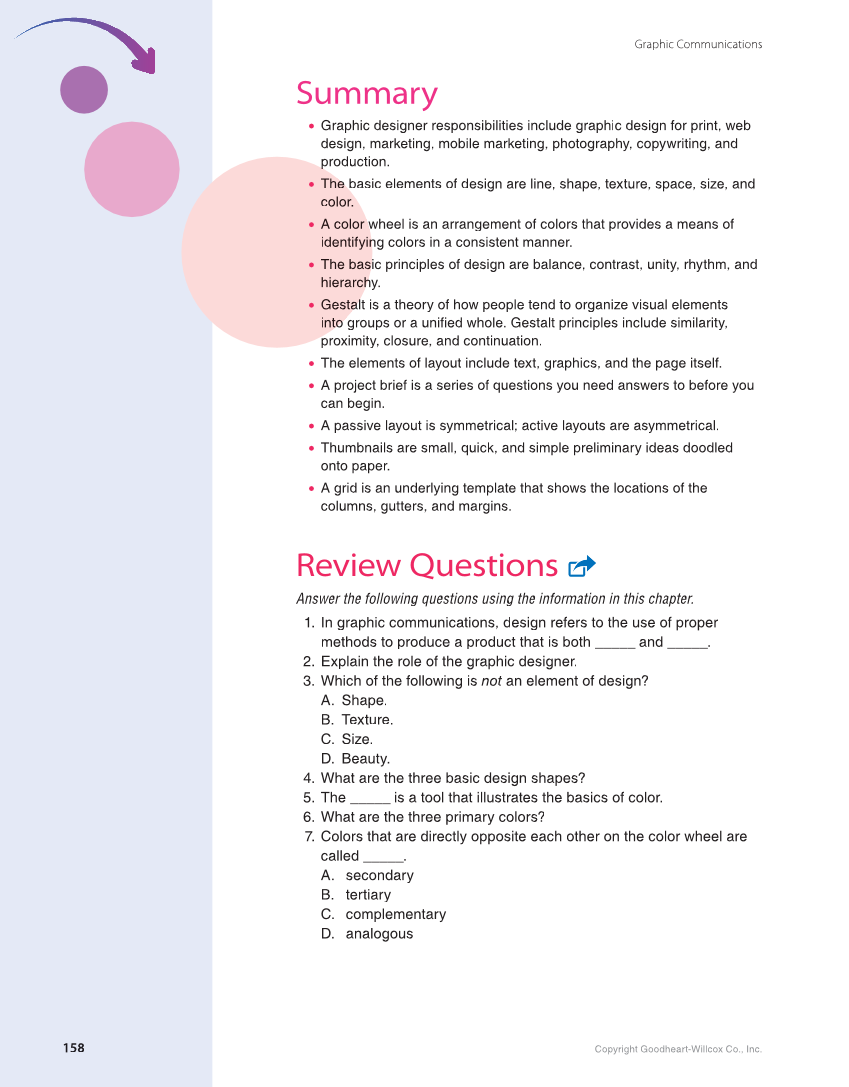Graphic Communications
Copyright Goodheart-Willcox Co., Inc.
158
Summary
• Graphic designer responsibilities include graphic design for print, web
design, marketing, mobile marketing, photography, copywriting, and
production. p
• e basic elements of design The are line, shape, texture, space, size, and
color.
• wheel is an arrangement of colors that provides a means of A color w
ng colors in a consistent manner. identifyin
• sic principles The bas of design are balance, contrast, unity, rhythm, and
hierarchhy.
• alt is a theory of how people tend to organize visual elements Gestal
to groups or a unified whole. Gestalt principles include similarity, into
proximity, closure, and continuation.
• The elements of layout include text, graphics, and the page itself.
• A project brief is a series of questions you need answers to before you
can begin.
• A passive layout is symmetrical; active layouts are asymmetrical.
• Thumbnails are small, quick, and simple preliminary ideas doodled
onto paper.
• A grid is an underlying template that shows the locations of the
columns, gutters, and margins.
Review Questions
Answer the following questions using the information in this chapter.
1. In graphic communications, design refers to the use of proper
methods to produce a product that is both _____ and _____.
2. Explain the role of the graphic designer.
3. Which of the following is not an element of design? t
A. Shape.
B. Texture.
C. Size.
D. Beauty.
4. What are the three basic design shapes?
5. The _____ is a tool that illustrates the basics of color.
6. What are the three primary colors?
7. Colors that are directly opposite each other on the color wheel are
called _____.
A. secondary
B. tertiary
C. complementary
D. analogous
